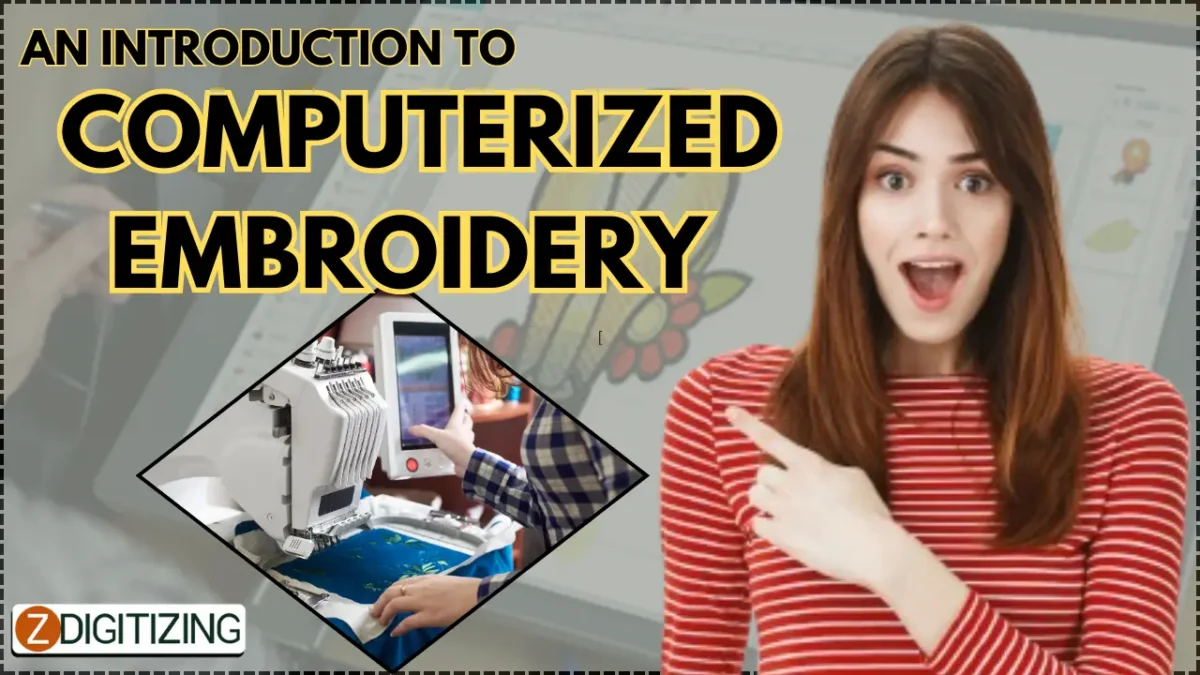In the realm of embroidery, technological advancements have propelled the craft into a new era of precision, efficiency, and creativity. Computerized embroidery, also known as digital embroidery, has revolutionized the way intricate designs are stitched onto fabric, offering unparalleled accuracy and versatility. In this comprehensive guide, we delve into the world of computerized embroidery, exploring its origins, evolution, and the role of embroidery digitizing in shaping this innovative art form.
Understanding Computerized Embroidery
Computerized embroidery involves the use of specialized software and digital embroidery machines to stitch intricate designs onto fabric. Unlike traditional hand embroidery, which relies on manual stitching techniques, computerized embroidery automates the stitching process, allowing for greater speed, accuracy, and repeatability.
The Evolution of Computerized Embroidery
The roots of computerized embroidery can be traced back to the late 20th century when advancements in computer technology paved the way for automated stitching machines. Early computerized embroidery systems were rudimentary, with limited design capabilities and cumbersome interfaces. However, as technology progressed, so too did the capabilities of computerized embroidery machines.
The Role of Embroidery Digitizing
At the heart of computerized embroidery lies the process of embroidery digitizing. Embroidery digitizing involves converting artwork or designs into digital embroidery files that can be read by embroidery machines. This process is essential for translating complex designs into stitch patterns, ensuring precision and accuracy in the final embroidered product.
How Embroidery Digitizing Works
Embroidery digitizing begins with the creation of a digital design file using specialized software. The design file, often in formats such as .DST or .EMB, contains instructions for the embroidery machine, specifying stitch types, colors, and placement. Skilled digitizers meticulously map out each stitch, taking into account factors such as fabric type, thread tension, and design complexity.
Benefits of Computerized Embroidery
Computerized embroidery offers numerous advantages over traditional hand embroidery, including:
- Precision and Consistency: Computerized embroidery ensures precise stitching and consistent results, even for complex designs.
- Efficiency: Automated stitching processes significantly reduce production time and labor costs compared to hand embroidery.
- Versatility: Computerized embroidery machines can stitch a wide range of designs, from intricate logos to large-scale patterns, with ease.
- Customization: Digital embroidery software allows for easy customization of designs, making it simple to tailor embroidery projects to specific preferences or requirements.
Applications of Computerized Embroidery
Computerized embroidery finds applications across various industries and sectors, including:
- Apparel and Fashion: Embroidered logos, designs, and embellishments add visual interest and branding to garments, accessories, and footwear.
- Promotional Products: Customized embroidered merchandise, such as hats, bags, and patches, serve as effective marketing tools for businesses and organizations.
- Home Decor: Embroidered linens, pillows, and curtains add a touch of elegance and personalization to interior spaces.
- Automotive and Aerospace: Embroidered upholstery and interior components enhance the aesthetic appeal and comfort of vehicles and aircraft.
ZDigitizing: Leading the Way in Embroidery Digitizing
ZDigitizing is at the forefront of offering digitizing solutions tailored to the needs of businesses and individuals. With expertise in logo digitizing, 3D puff digitizing, cap digitizing, and applique digitizing, ZDigitizing ensures high-quality and precise embroidery designs that meet the demands of today’s competitive market. By leveraging the expertise of zdigitizing and embracing the possibilities of computerized embroidery, embroiderers can unlock new levels of creativity and efficiency in their stitching projects.
Conclusion
Computerized embroidery represents a transformative shift in the art of stitching, combining technological innovation with traditional craftsmanship to create stunning and intricate designs. From its humble beginnings to its widespread adoption across various industries, computerized embroidery continues to push the boundaries of creativity and precision. With the advent of embroidery digitizing and the expertise of companies like ZDigitizing, the future of computerized embroidery looks brighter than ever, offering endless possibilities for embroiderers to explore and innovate.
In the world of embroidery, computerized stitching has emerged as a game-changer, offering unmatched precision, efficiency, and versatility. With the help of embroidery digitizing and companies like ZDigitizing, embroiderers can take their stitching projects to new heights, creating breathtaking designs that captivate and inspire.


